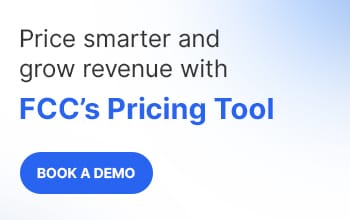Table of Contents
- What is Everyday Low Pricing ELDP?
- Rationale behind the Everyday Low Pricing (ELDP)?
- Everyday low pricing vs high low pricing
- Advantages of everyday low pricing?
- Disadvantages of everyday low pricing?
- Conclusion
What is Everyday Low Pricing ELDP?
Everyday Low Pricing (EDLP) is a retail pricing method where prices are consistently kept low rather than relying on discount events or promotional campaigns. This approach contrasts with similar pricing strategies like high-low pricing, where prices fluctuate based on promotions. EDLP aims to assure customers that they can always find the lower price for their desired products, encouraging consistent purchasing and high customer satisfaction.
This strategy aims to drive higher sales volumes by maintaining competitive prices year-round. EDLP has proven effective in sustaining strong sales performance, especially for large corporations like the Walmart company, which has built a strong brand reputation using this business model. By always offering the lowest prices, EDLP helps maintain a retailer's market share in a competitive environment.
Rationale behind the Everyday Low Pricing (ELDP)?
The Everyday Low Pricing (EDLP) strategy operates on the belief that customers are consistently drawn to products with persistently low prices. This approach drives brand awareness by creating the perception that customers are always getting the fair price, which influences their decision to return. The assurance of a product always being priced at its lowest enhances customer loyalty, as they find comfort in the long-term price stability.
From a marketing perspective, the everyday low pricing strategy simplifies the shopper's decision-making process. Customers are relieved from waiting for sale events or using coupons, secure in the knowledge that a specific store or product offers low prices daily. For retailers, this strategy reduces the need for dynamic pricing adjustments or frequent promotional campaigns.
Given that the EDLP strategy aims to drive profit through high sales volumes, it is most effective when applied to certain products and categories, such as premium product selection that is regularly added to a customer's basket. This strategy ensures that customers are attracted to the products and remain loyal due to the consistent value they receive. The biggest benefit of EDLP is the ability to sustain a steady volume of items sold, which is crucial for retailers with a long timeframe for return on investment.
Everyday low pricing vs high low pricing
High Low Pricing is a method where companies initially set high prices for their products and later reduce them through promotions, markdowns, or clearances. This approach creates the perception, or some might argue, the ‘illusion’ of a bargain once discounts are applied. The strategy is often employed to attract customers and leverage the excitement of a sale to promote products with higher profit margins.
In contrast, the everyday low price strategy, with its continuous and unchanging nature, is quite distinct. EDLP maintains a constant price, whereas High Low Pricing involves a strategic timing approach. Deciding which strategy aligns best with your unique business goals requires understanding your products, product categories, and brand positioning. For example, EDLP is particularly effective in the United States market for retailers like Walmart and Costco.
However, the choice between EDLP and High Low Pricing does not have to be binary or absolute. Some businesses opt for a hybrid pricing strategy, applying EDLP to certain products while employing High Low Pricing, competitive pricing, or different pricing strategies for other products.
Advantages of everyday low pricing?
The Everyday Low Pricing (EDLP) strategy offers several advantages. A key benefit is the potential for increased sales over an extended period, driven by customers’ desire for consistently low-prices. Furthermore, retailers employing the EDLP strategy do not need to adjust promotional prices to compete in the market or attract customers during sales events.
Another significant advantage of the EDLP strategy is that retailers do not need to invest heavily in promoting discount events or low pricing deals, as they offer the lowest fixed prices in the market. A prime example of this strategy’s success is Costco, where the long-term implementation of EDLP has proven profitable and remains their core business model. This approach can also reduce production costs by optimizing the supply chain and focusing on bulk purchases.
Disadvantages of everyday low pricing?
The main drawback is that the everyday low pricing strategy keeps profit margins at lower levels. Given that a store must offer the lowest prices, the profit margin between the cost of the product and its selling price is minimal. As a result, this strategy can only be effective with substantial sales volumes and a long-term plan. The return on investment with this approach can take a significant amount of time, making it potentially unsuitable for certain retailers.
Unlike the High Low Pricing strategy, EDLP does not depend on sensational promotions or enticing customers with special deals. Consequently, a retailer employing the EDLP strategy may lack appeal to customers during special shopping events. This is because the constant low prices may not create the same sense of urgency or excitement as limited-time discounts or sales events.
All in all
After a thorough analysis of the Everyday Low Pricing (EDLP) strategy, its benefits, and drawbacks, it can be concluded that EDLP is an effective approach for retailers with high sales volumes and the ability to plan for long-term investment returns. The EDLP strategy can potentially boost the number of loyal customers.
By maintaining consistently low prices, a retailer ensures that customers can always secure the best deal, reinforcing their loyalty and encouraging repeat business. This strategy, therefore, serves as a powerful tool for retailers aiming to build a stable customer base while offering the best value every day.
FAQ
An Everyday Low Pricing (EDLP) strategy can boost profits by driving customer loyalty, reducing promotional costs, and optimizing inventory management. Consistent low prices attract customers seeking value, leading to increased sales volume and higher revenue. Eliminating the need for frequent sales and discounts saves significant marketing expenses. Predictable demand with EDLP allows for better inventory control, reducing stockouts, markdowns, and carrying costs, ultimately improving profit margins.
An example of Everyday Low Pricing (EDLP) is the strategy employed by Walmart, a renowned retail corporation. Walmart consistently offers products at low prices, eliminating the need for frequent sales or discounts. This approach simplifies shopping decisions for customers and also fosters customer loyalty, as they are assured of getting the best value every day. However, EDLP strategy requires high sales volumes and a long-term plan to be effective.
Determining if EDLP is suitable involves careful analysis of the following parameters:
-
Consider your target market's price sensitivity, product category, and competitive landscape.
-
Evaluate your cost structure to ensure sustainable low prices.
-
Assess your ability to manage inventory and operations under a steady demand pattern efficiently.
If your customers value consistency and convenience over short-term deals, and if you can maintain profitability with lower margins but higher volume, EDLP might be a viable option.
Everyday Low Pricing (EDLP) is most commonly adopted by retailers focusing on basic necessities and frequently purchased items. This strategy is particularly effective for:
-
Grocery stores: Retailers like Walmart and Aldi excel in this area, offering consistently low prices on food, beverages, and household essentials.
-
Discount retailers: Stores like Dollar General and Family Dollar prioritize EDLP to attract price-conscious customers seeking value on a wide range of products.
-
Warehouse clubs: Costco and Sam's Club offer bulk quantities at discounted prices, emphasizing a consistent low-price approach.
-
Drugstores: Chains such as CVS and Walgreens often incorporate EDLP for everyday health and personal care products.

